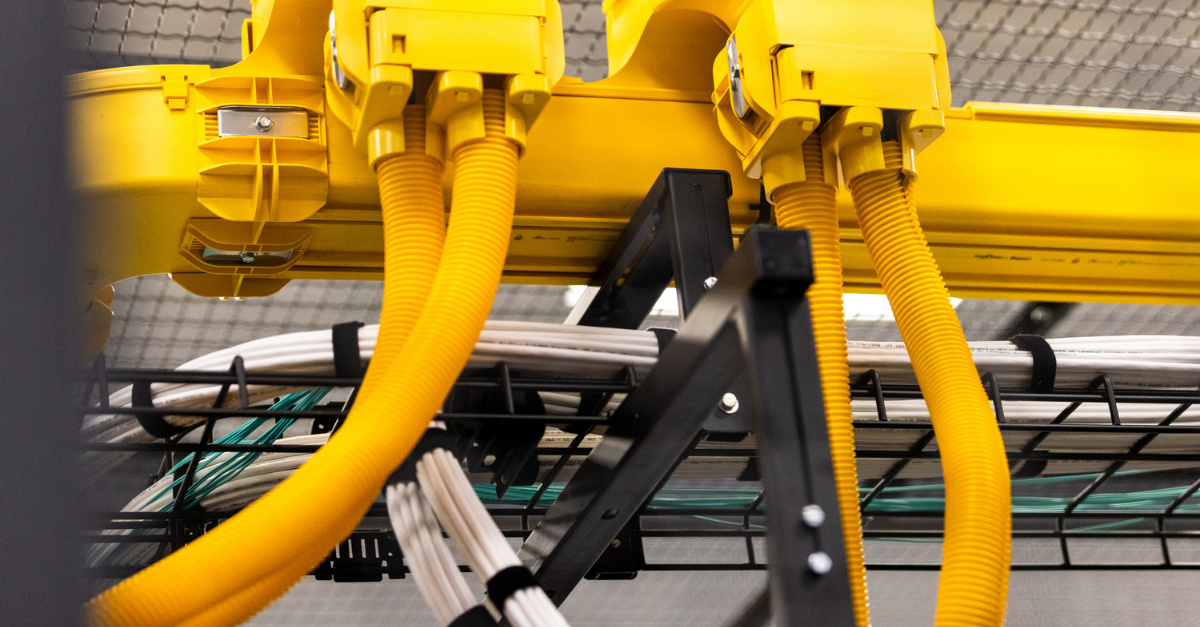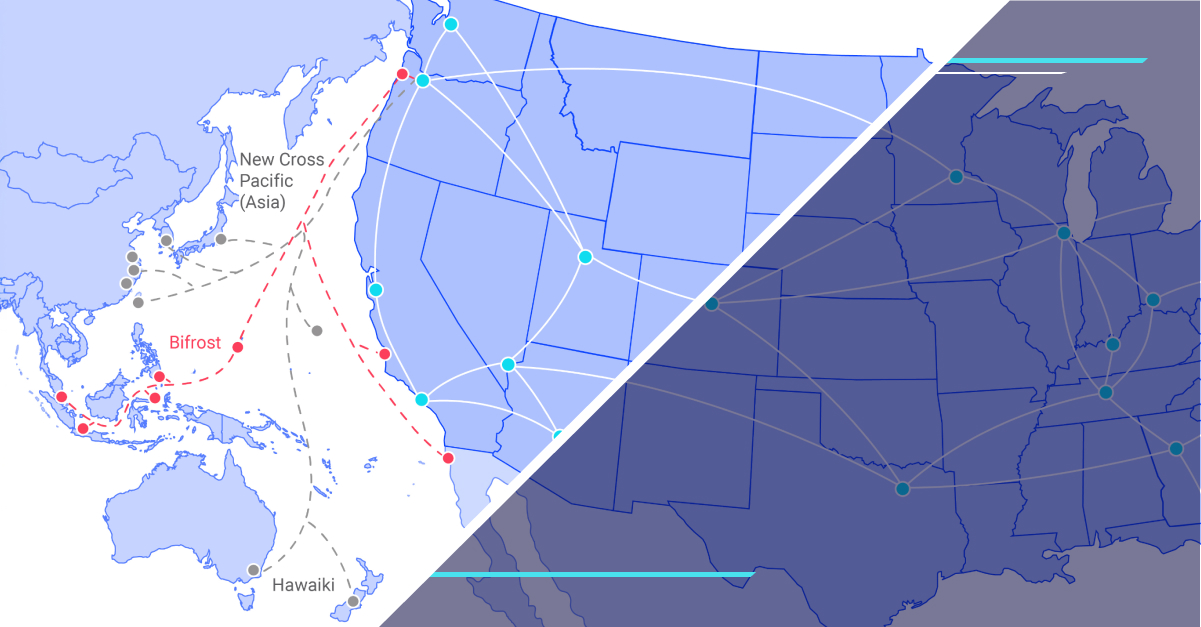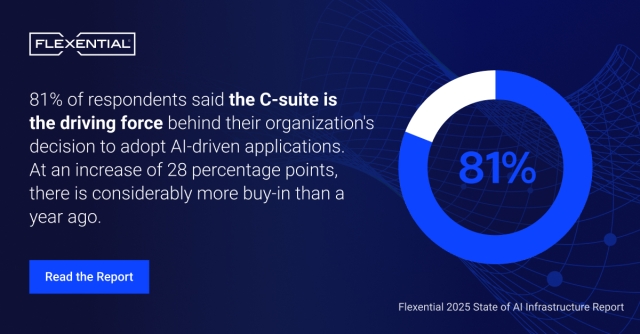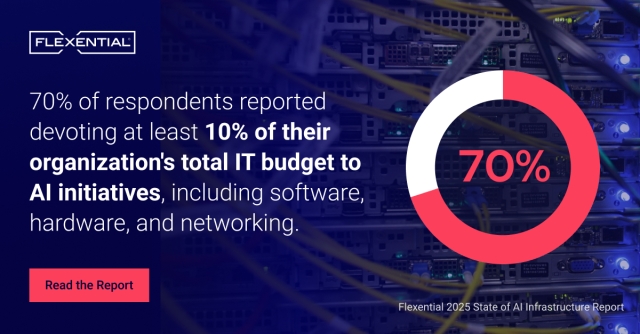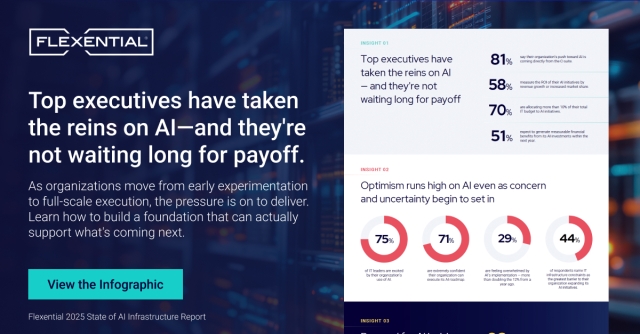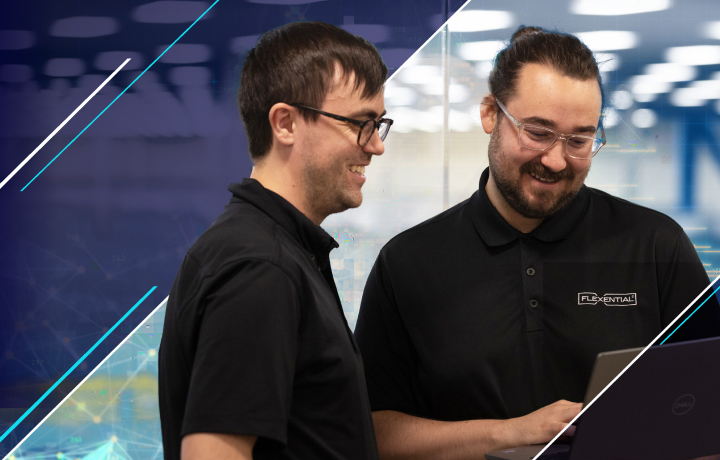The c-suite steps up: How executives are taking control of the AI agenda
AI is no longer a hidden initiative buried deep in IT. It’s become a boardroom priority. The Flexential State of AI Infrastructure Report reveals that executive leadership—especially from the C-suite—is now the single most powerful driver of AI adoption across the enterprise. This shift in ownership is reshaping how companies invest, measure success, and build the infrastructure needed to compete in an AI-first economy.

Why executive leadership matters now
While once a novelty, AI has become a driver of competitive advantage, innovation, and market disruption. The rise of generative AI and the democratization of advanced analytics have created new expectations across every department—from marketing and sales to supply chain and customer support. In this high-stakes environment, executive alignment is critical to breaking down silos, ensuring cross-functional adoption, and making infrastructure investments that scale.
Without senior leadership at the helm, AI projects risk being fragmented, underfunded, or misaligned with broader business goals. When leaders set the tone—financially and culturally—they accelerate adoption and reduce friction.
From experimentation to execution, C-Suite leads the charge
Last year, AI implementation was still considered an experimental endeavor at many organizations. Fast forward, and that landscape has shifted dramatically. The report shows that 81% of IT leaders now cite the C-suite as the primary force behind AI adoption, up from just 53% the previous year.
This surge in executive sponsorship reflects a broader realization: AI is not an isolated initiative—it’s foundational to business growth. As customer demands evolve and competitors embrace AI, executives are stepping up to fund, scale, and govern their organizations’ AI strategies with urgency.
AI now commands a larger slice of the IT budget
This leadership commitment is reflected in the numbers. A full 70% of respondents say they’re allocating at least 10% of their IT budget to AI, and 25% are investing even more, dedicating over 20% to AI initiatives like software, hardware, and networking.
But where is that investment going? Organizations aren’t just funding AI for the sake of optics. They’re targeting high-impact, enterprise-wide use cases:
- Generative AI (90%) for content creation, code suggestions, and chatbots
- Predictive analytics (69%) for forecasting and anomaly detection
- AI-enhanced cybersecurity (62%)
- Autonomous systems and robotics (60%)
These projects demand serious infrastructure—dense compute environments, GPU acceleration, scalable storage, and fast interconnection. It’s no surprise that the most ambitious AI strategies are also the most infrastructure-intensive.
ROI expectations are high and fast
The C-suite isn’t just backing AI with capital; they’re demanding returns. According to the report, 51% of organizations expect measurable financial benefits within the next 12 months, and another 23% within one to three years.
For today’s leadership, success is defined by impact:
- 58% measure ROI by revenue growth and market share
- 50% prioritize cost reduction and operational efficiency
- 47% focus on productivity gains and workforce augmentation
These expectations signal a shift in mindset. AI is no longer exploratory—it’s accountable. It must deliver value quickly, measurably, and across functions.
C-Suite accountability includes risk governance
While excitement is high, today’s leaders are not ignoring AI’s risks. Security, compliance, and model bias remain top concerns, especially as AI scales across business units and data environments.
Executives are responding with stronger governance:
- 67% have implemented security protocols for AI systems
- 58% have formalized frameworks for privacy and transparency
- 52% are actively addressing bias detection and mitigation
This marks a transition from “move fast and break things” to “move fast and build responsibly.” Strong oversight is now as critical as innovation.
Why this matters now
AI is evolving at breakneck speed. Companies that wait for perfect conditions risk falling behind competitors already reaping the benefits. The C-suite’s proactive leadership marks a critical turning point—one where AI success hinges on making bold, informed decisions about infrastructure, security, skills, and sustainability.
As AI becomes the backbone of digital business, executive involvement is no longer optional. It’s essential.
Get the full report with insights for today’s AI leaders
Whether you're a CIO defining the roadmap, a CFO tracking ROI, or a CEO setting the strategic vision, this report offers actionable insights to help guide your next move. You’ll get:
- Benchmarks on AI investment trends and timelines
- Infrastructure readiness strategies from 350+ IT leaders
- Perspectives on talent, security, sustainability, and scalability
Download the Flexential State of AI Infrastructure Report
Explore the full blog series on the State of AI Infrastructure!
This post is part of our multi-part blog series unpacking the key findings from the Flexential State of AI Infrastructure Report. Each post tackles a core pillar of enterprise AI readiness—from strategy and infrastructure to talent, security, and sustainability.
Executive Leadership & AI Investment
The c-suite steps up: How executives are taking control of the AI agenda
Explore why leadership is the #1 driver of AI growth—and how investment priorities are shifting fast.
Infrastructure & Capacity Planning
The new race for AI capacity: Why smart infrastructure planning starts now
Discover why planning ahead is critical as infrastructure becomes the top bottleneck for AI at scale.
AI Talent & Workforce Strategy
Mind the gap: Why solving the AI talent shortage is critical to innovation
Learn how organizations are navigating workforce shortages, burnout, and upskilling in the AI era.
Network & Security Readiness – Coming Soon!
Beyond bandwidth: Rethinking network and security strategies for the AI era
See how enterprises are upgrading connectivity, adopting zero-trust, and securing distributed AI workloads.
Sustainability & Energy Efficiency – Coming Soon!
Balancing power and progress: Building sustainable AI infrastructure that lasts
Understand how leaders are aligning ESG goals with power, cooling, and performance demands.
Want the full story? Get all the data, charts, and insights in the full report:
